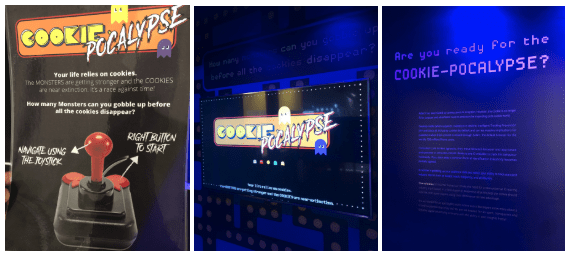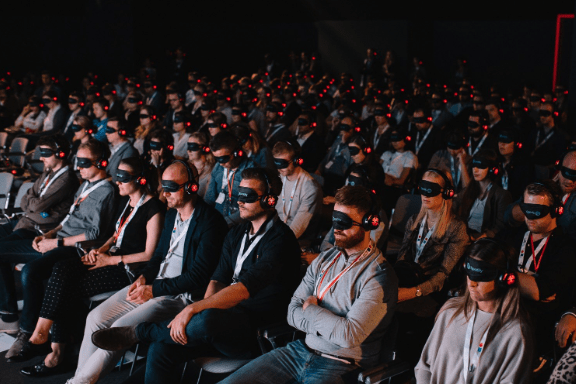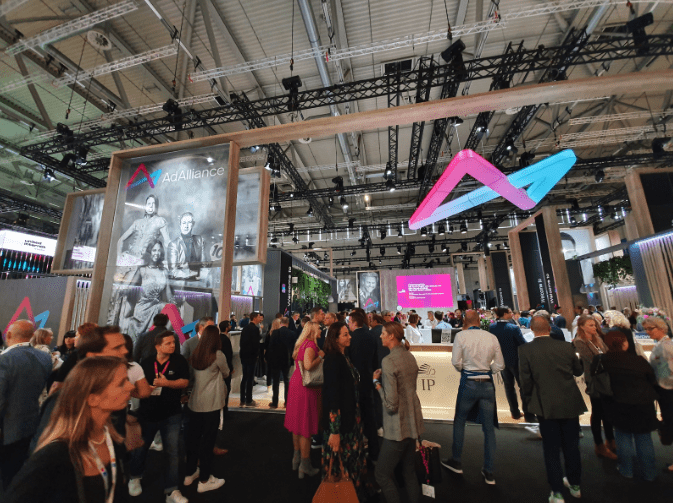The five biggest trends from DMEXCO 2019
DMEXCO, the biggest advertising event in the European calendar, took place in Cologne, Germany this month.
The annual adtech fest is still a packed event, but there are signs that DMEXCO may have reached its zenith. Organisers predicted around 40,000 people attended the event this year, which is the same as last year – not great when you consider that last year attendance plummeted by 22%. Threats were debated: the death of the cookie, consolidation and sales – and the very real possibility of an impending global recession.
It wasn’t all doom and gloom, though! Despite all the noise, the industry is still growing, with the IAB announcing that programmatic ad spend in Europe rose by 33% last year to hit €16.7 billion (about $18.4 billion), while 50% of video ads in the region are now traded programmatically.
So what were the big talking points from the event? Our team has pulled together their top five trends based on the conversations they had:
1. The hunt for Adland solutions once the cookie crumbles intensifies
One of the biggest conversations heard around the halls of the Koelnmesse was around the future of the ad industry without third party cookies. Ad tech has been fueled by cookies since inception. However, the cookie is no longer fit for purpose. Desktop traffic (which supports cookies) is in decline, while browsers such as Firefox and Safari have blocked all third-party cookies by default.
Furthermore, consumers are screen-agnostic, frequently switching between browser and app-based environments (mobile or increasingly CTV), making it harder and harder for advertisers to track their campaigns. A new universal ID capable of tracking consumer behaviour across various different screens needs to be adopted, but the industry is still locked in a fierce battle to determine what post-cookie life should look like.
Many solutions were discussed and debated in Cologne, but the three that gained significant traction in DMEXCO last week came from The Trade Desk, DigiTrust (owned by the IAB) and an independent European vendor called ID5.
Although the offering from The Trade Desk appears to be the most popular, many people are suggesting ownership of the ID should fall to an independent rather than a vendor that also has a vested interest in selling media. Either way, it’s not yet clear which ID both advertisers and publishers will be using when the cookie finally crumbles.

Unruly’s stand featured an interactive game where visitors were invited to play the Cookie-Pocalypse challenge – a homage to the video game Pac-Man.
2. Brand safety shifts to brand suitability
The industry is still grappling with safety at scale. Advertisers attending the World Federation of advertiser’s gathering are eager for the Global Alliance for Responsible Media (GARM) to make some headway. Digital Decisions – a new live depositary of reported viewability, brand safety and detected ad fraud data was launched. Created by Adloox, DoubleVerify, Integral Ad Science, Meetrics and MOAT, it seems that unlikely collaborations may be the only route forward to solving the industry’s toughest challenge. Genuine brand-safe alternatives to the duopoly are still forming, with Pinterest at DMEXCO for the first time as it quietly expands its European footprint by positioning itself as the safe visual search corner of the internet.
As is the usual protocol with tech companies, the conversation has already moved on before the core problems have been solved. It’s no longer enough to run against blacklists, advertisers need to ensure their ads are placed in culturally-relevant contextual environments.
For news organisations, partnering with deeper semantic analysis or developing custom brand safety tagging tools implemented and vetted independently by journalists presents an opportunity. Newsjacking means brands can take advantage of cultural zeitgeist. For example KFC and Ikea have both jumped into the Brexit debate with internet memes spreading like wildfire. News environments are the perfect delivery mechanism for authentic and playful brands. Unruly’s own recent study has also proven that it’s a myth that news environments are negative; actually 46% of ‘news’ content is positive and only 6% is negative.
3. The paradox: Silence is golden, while audio is having a renaissance
Eighty-five percent of video ads are viewed with the sound off and the Coalition for Better Ads’ guidelines dictate that autoplay video ads should be served sound off, which everyone agrees makes for a better consumer experience. So much so, that most of the major browsers are issuing updates that will block publishers if they try to run outstream video ads with the sound on (or autoplay In-Stream ads).
Persuading audiences to perform an extra task in activating sound on top of any campaign call to action would be a near-impossible task, so canny advertisers and agencies have started to optimise their creatives for silence. Cannes Lions has even introduced a sound-off category for the best silent creatives.
Outside of outstream video, sound is having a renaissance. Apple announced its own streaming service which will be available for £4.99 a month from November. Many Supply Side Platforms were touting their audio and CTV capabilities. On the creative side, much of the talk of the show was around creating ‘sound logos’ and ‘sound brand language’, with Spotify speaking to the personability of audio.

Spotify’s mainstage spot celebrated the intimacy of audio while Unruly now hosts silent discos around the world.
The message? Advertisers frequently have one global creative asset with which they must create many ways to move people – across many platforms, many countries and many demographics. Dynamic creative optimisation, automated computer vision partnerships and sophisticated subtitle copywriting solution, continue to make strong headways.
4. Advertisers must look beyond the pipes to regain trust
This year’s event motto was ‘trust in you’. Thankfully, there were none of the scantily-clad women we’ve historically seen at DMEXCO after years of protesting by key personnel within advertising. Sadly, there were 19 ‘manels’ (panels consisting entirely of men).
This summer, two ads were banned by the Advertising Standards Authority for using negative gender stereotypes. The new rules, introduced at the beginning of the year, ban the depiction of men and women engaged in gender-stereotypical activities to help stop “limiting how people see themselves and how others see them and the life decisions they take”.
Our own UnrulyEQ study, which helps de-risk advertisers’ content before it’s launched, discovered that 1 in 5 people claimed one of the banned ads (from Philadelphia) portrayed people negatively and that nearly a quarter said it contained gender stereotypes. Consumer statements included ‘Men can’t look after their children is the unacceptable subtext?’ And ‘men’s parenting standards were mocked’. Unsurprisingly, it scored very low for emotional intensity, brand favorability (19% vs. a UK norm of 29%) and the ‘find out more’ metric.
Meanwhile, Forbes 30 under 30 activist, Ziad Ahmed took to the stage, stating that 70% of young people are more fearful about tomorrow than hopeful which found that Salesforce CMO Stephanie Buscemi quoted their recent Consumer Trust study: 54% of consumers believe companies don’t operate with their customers’ best interests in mind. Among all the tech jargon, advertisers need to step back and have a tangible purpose beyond profit.
5. Publisher alliances took centre stage while the regulators give the duopoly a competitive advantage
Germany’s own Ad Alliance, which consists of four of Germany’s biggest publishers, took centre stage with one of the largest stands at the event. And the Ozone Project announced that it’s moving into TV and magazines.
Meanwhile, the talk of the show was that while privacy regulations such as GDPR and CCPA will protect consumers and bring positive change to our industry, critics of the recent fine imposed by the FTC on Facebook have argued that its restrictions and rulings could give Facebook an excuse to refuse to share its data outside of its ecosystem, thereby increasing its competitive edge.
Furthermore, the huge walled data gardens of Facebook and Google enable them to transport data across effectively different companies and products because they haven’t been broken up and are viewed as one by regulators like the ICO and FTC.

In summary, there is a lot happening within the adtech space! At our next Trust Talks event, we will be bringing some of the UK’s leading experts together from the publishing and advertising industries to discuss and debate a number of these topics. Click here to check out the full agenda, and follow us on Twitter for live updates from the event.
